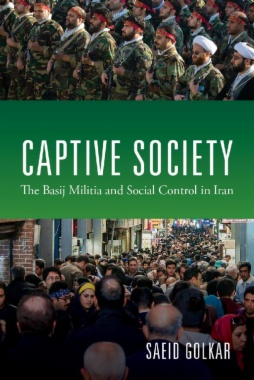Iran's Organization for the Mobilization of the Oppressed (Sazeman-e Basij-e Mostazafan), commonly known as the Basij, is a paramilitary organization used by the regime to suppress dissidents, vote as a bloc, and indoctrinate Iranian citizens. Captive Society surveys the Basij's history, structure, and sociology, as well as its influence on Iranian society, its economy, and its educational system. Saied Golkar's account draws not only on published materials—including Basij and Revolutionary Guard publications, allied websites, and blogs—but also on his own informal communications with Basij members while studying and teaching in Iranian universities as recently as 2014. In addition, he incorporates findings from surveys and interviews he conducted while in Iran.
- Front Cover
- Contents
- List of Figures and Table
- Preface
- Acknowledgments
- Part I: The Civil Militia and State Control
- Chapter 1: The Basij: Nongovernmental Organization, Administered Mass Organization, or Militia?
- Part II: The Basij and the Shaping of an Insiders’ Network
- Chapter 2: The History and Transformation of the Basij, 1980–2013
- Chapter 3: Penetration into Society: The Organizational Structure of the Basij
- Chapter 4: Mass Membership and Recruitment Training
- Chapter 5: The Mass Indoctrination of Basij Members
- Part III: The Basij and the Suppression of Others
- Chapter 6: The Basij and Propaganda
- Chapter 7: The Basij and Moral Control
- Chapter 8: The Basij and Surveillance
- Chapter 9: The Basij and Political Repression
- Part IV: The Basij and the Controlling of Societal Sectors
- Chapter 10: The Basij and the Controlling of Families
- Chapter 11: The Basij and the Controlling of Schools
- Chapter 12: The Basij and the Controlling of Universities
- Chapter 13: The Basij and the Controlling of the Economy
- Part V: The Sociology of the Basij—Motivations and Loyalty
- Chapter 14: Basij Members—Islamic Warriors or Religious Thugs?
- Conclusion: The Emergence of a Captive Society
- Appendix: Excerpts from Official Basij Documents
- Notes
- Selected Bibliography
- Index

